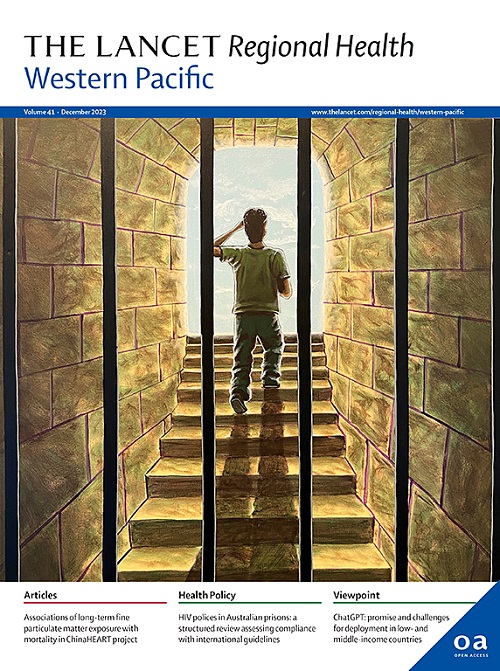Bronchoalveolar lavage combined with metagenomics next-generation sequencing enhances the diagnostic and therapeutic efficacy of immune checkpoint inhibitor pneumonia: result from a prospective cohort study
IF 7.6
1区 医学
Q1 HEALTH CARE SCIENCES & SERVICES
引用次数: 0
Abstract
Background
Checkpoint Inhibitor Pneumonitis (CIP) poses a grave risk as a life-threatening complication defined by emerging lung infiltrates in cancer patients undergoing immune checkpoint inhibitor treatment. This study aims to investigate the value of bronchoalveolar lavage (BAL) combined with metagenomic next-generation sequencing (mNGS) in the diagnosis and precision treatment of CIP for providing evidence-based medicine.
Methods
This study enrolled a total of 93 patients with Checkpoint Inhibitor Pneumonitis (CIP) from a prospective clinical cohort (NCT06192303), including 35 cases of pure-type CIP (PT-CIP) and 58 cases of mixed-type CIP (MT-CIP). Logistic regression analysis was employed to identify independent risk factors for mixed-type CIP and to construct a corresponding nomogram predictive model for MT-CIP. A comprehensive microbiota atlas was further used to display the microbiota characteristics of patients with different types of CIP. Additionally, we assessed the value of BAL combined with mNGS in guiding CIP treatment by comparing the 7-day effectiveness of treatment, the intensity of antibiotic use during hospitalization, the total time to relief to grade I or below, and the proportion of resolution within three months.
Findings
Univariate and multivariate logistic regression analyses indicated that the history of COPD, dyspnea, CRP, and ALC are independent risk factors for mixed-type CIP. The area under the ROC curve (AUROC) of the MT-CIP prediction model, which was constructed based on clinical indicators and BAL mNGS results, reached 0.895 (95% CI: 0.805 – 0.985, Sensitivity: 0.871, Specificity: 0.9). BALF microbiota analysis suggested the potential of porphyromonas as a characteristic genus in mixed-type CIP, showing a significant negative correlation with Absolute Eosinophil Count (AEC) in the blood. The BAL mNGS group exhibited significantly higher efficacy rates at 7 days of treatment (90.2% vs 69.0%, P<0.05) and a markedly greater resolution rate within three months compared to the non BAL mNGS group (58.1% vs 32.3%, P<0.05). Moreover, BAL mNGS demonstrated valuable clinical guidance for antibiotic usage in severe cases of CIP.
Interpretation
BAL mNGS holds valuable clinical guidance significance for the precise diagnosis and treatment of CIP. Employing a strategy of risk stratification for MT-CIP through the integration of clinical indicators and BAL mNGS contributes to further optimizing the therapeutic management of CIP patients.
Funding
The study is jointly funded by the National Natural Science Foundation of China (NO.82272729 and NO.81870026), the Natural Science Foundation of Guangdong Province (NO.2022A1515010509 and NO.2023A1515010285), Clinical Research Startup Program of Southern Medical University by High-level University Construction Funding of Guangdong Provincial Department of Education (LC2016PY015 and LC2019ZD008), Clinical Research Program of Nanfang Hospital Southern Medical University (2022CR011, and 2022CR013),Medical Scientific Research Foundation of Guangdong Province(B2021449), President Foundation of Nanfang Hospital, Southern Medical University (2020C044).
求助全文
约1分钟内获得全文
求助全文
来源期刊

The Lancet Regional Health: Western Pacific
Medicine-Pediatrics, Perinatology and Child Health
CiteScore
8.80
自引率
2.80%
发文量
305
审稿时长
11 weeks
期刊介绍:
The Lancet Regional Health – Western Pacific, a gold open access journal, is an integral part of The Lancet's global initiative advocating for healthcare quality and access worldwide. It aims to advance clinical practice and health policy in the Western Pacific region, contributing to enhanced health outcomes. The journal publishes high-quality original research shedding light on clinical practice and health policy in the region. It also includes reviews, commentaries, and opinion pieces covering diverse regional health topics, such as infectious diseases, non-communicable diseases, child and adolescent health, maternal and reproductive health, aging health, mental health, the health workforce and systems, and health policy.
 求助内容:
求助内容: 应助结果提醒方式:
应助结果提醒方式:


